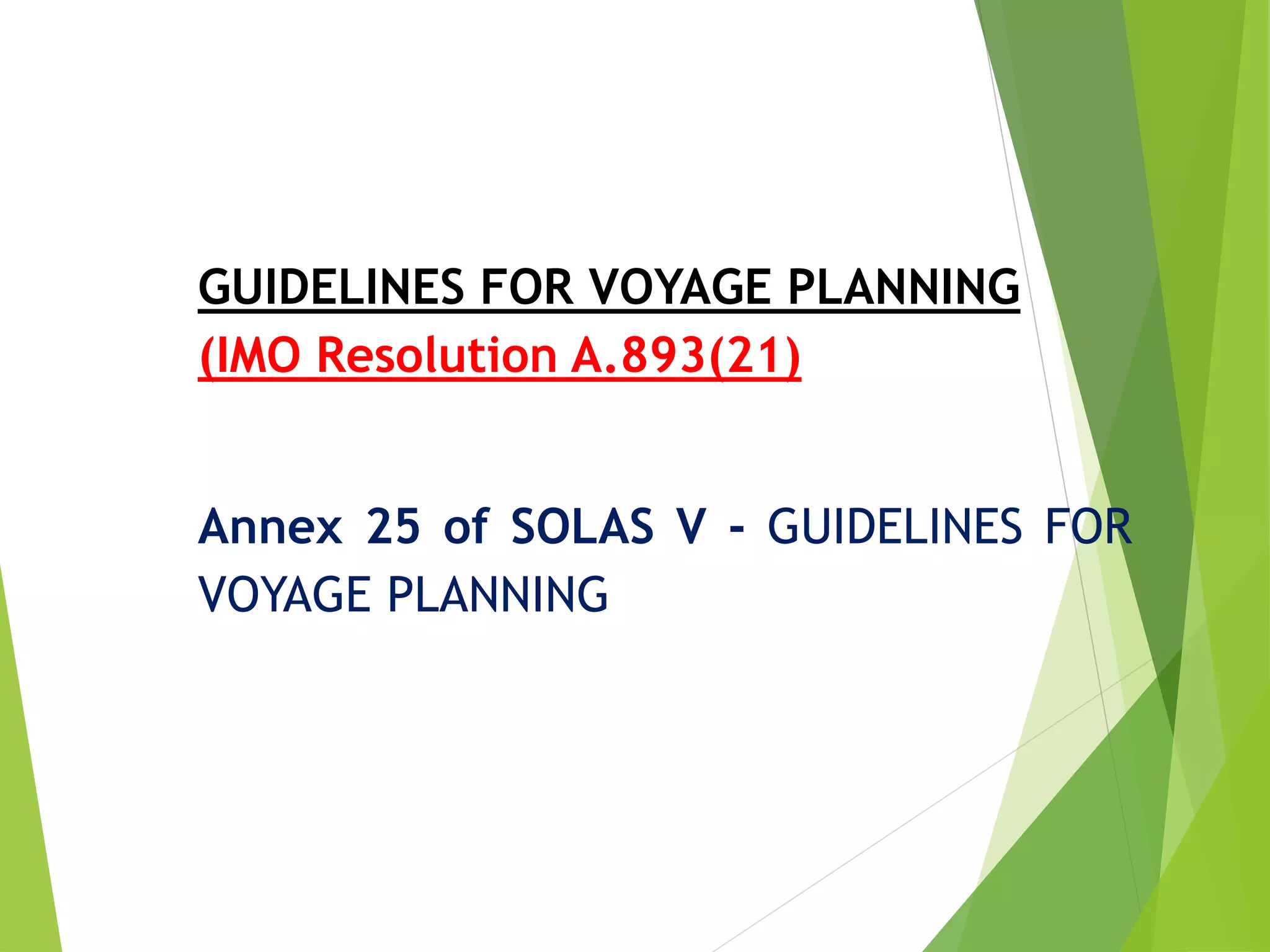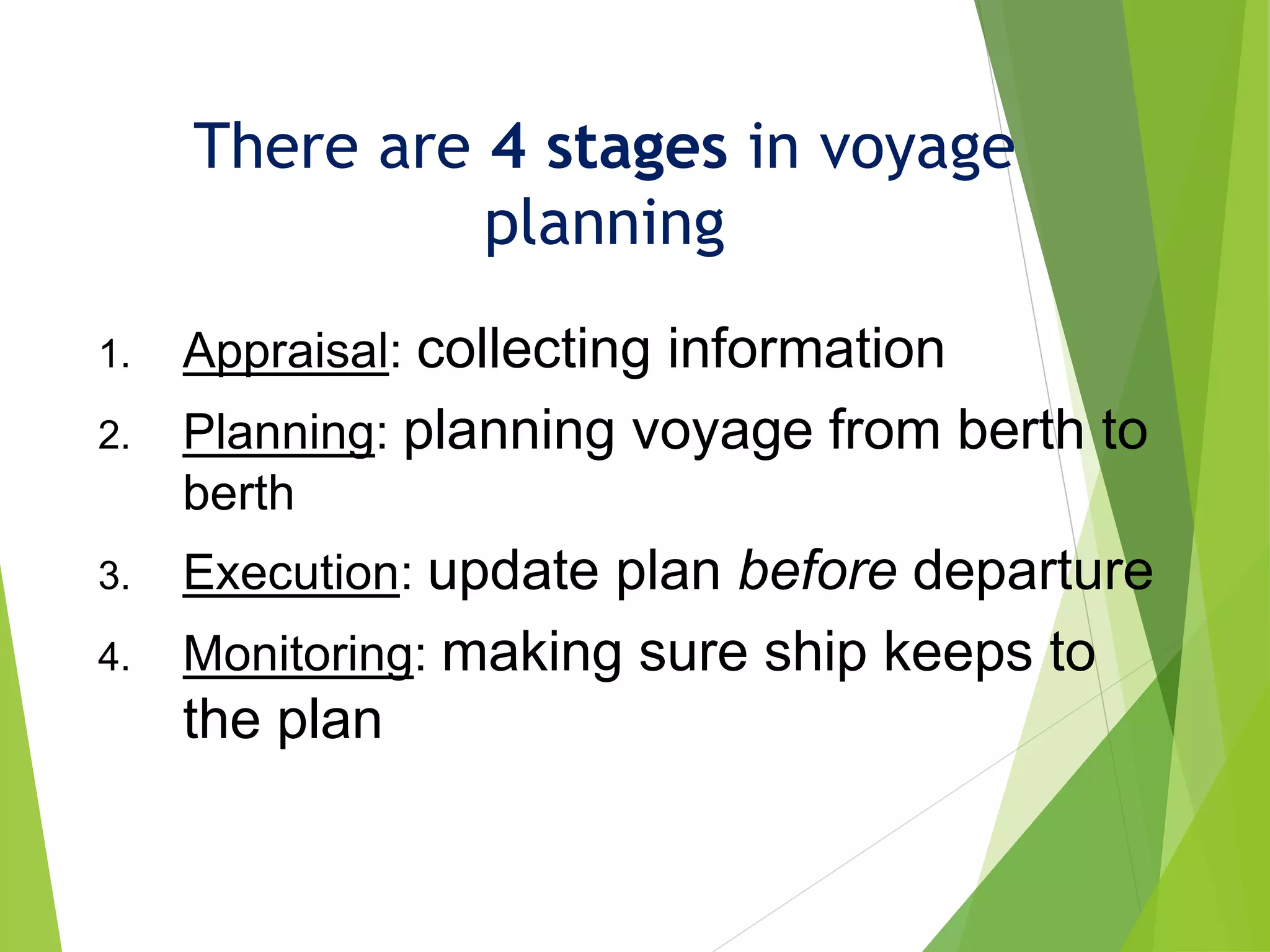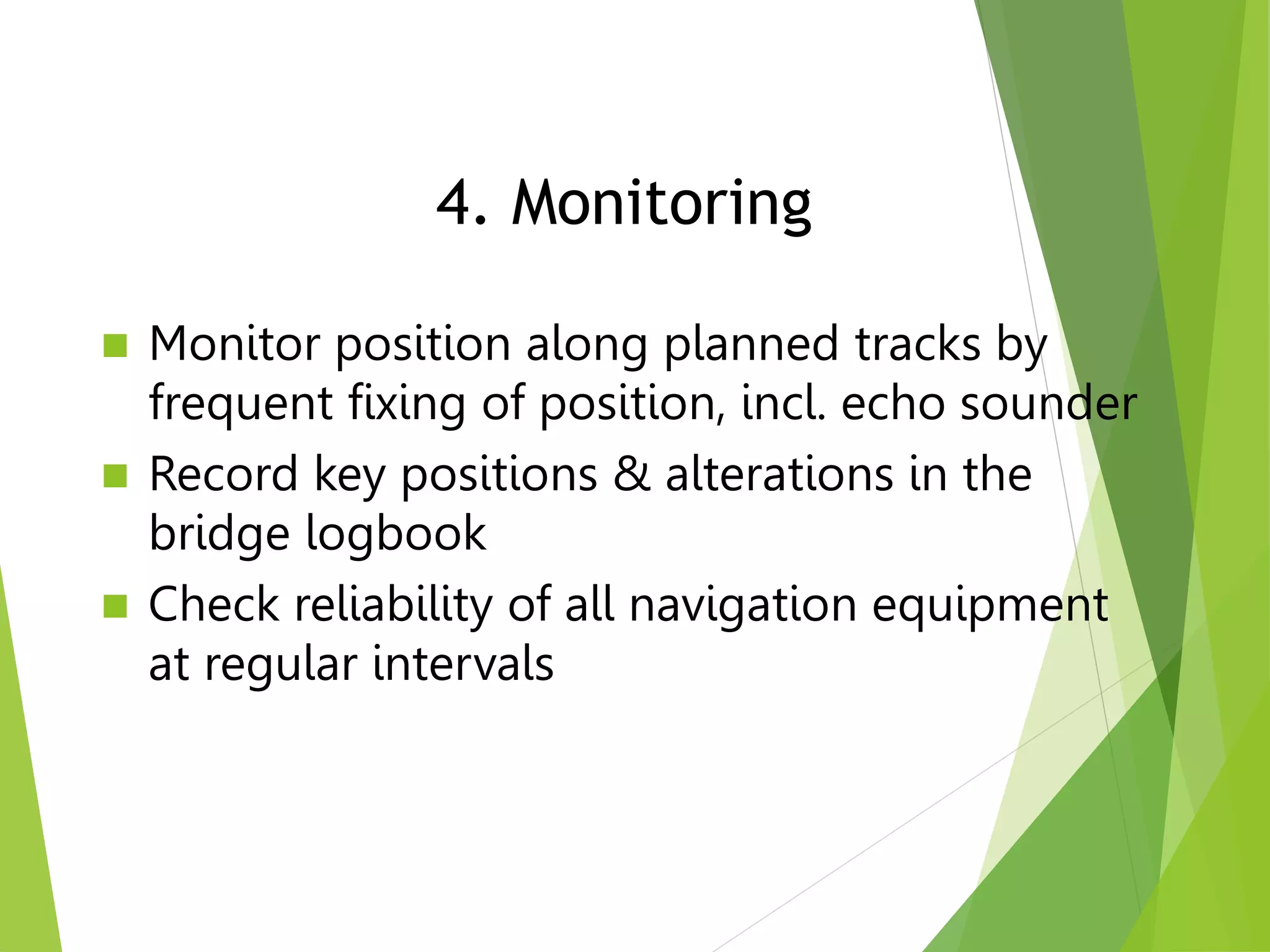Voyage planning involves 4 key stages: 1) Appraisal of relevant information before departure, 2) Planning the route from berth to berth on charts and in notebooks, 3) Execution of the plan by navigators, and 4) Monitoring progress along the planned route by frequent position fixing. Effective voyage planning ensures safety of navigation and protection of the environment by accounting for hazards and providing alternative contingency plans.






![Introduction
Passage planning or voyage planning is a
procedure of developing a complete
description of a vessel's voyage from start to
finish.
Production of a passage plan prior to
departure is a legal requirement.
The practice of voyage planning has evolved
from drawing lines on nautical charts to a
process of risk management.]](https://image.slidesharecdn.com/voyage-planningppt-230309022321-65615dfe/75/Voyage-Planning-PPT-ppt-7-2048.jpg)

















![ On the chart [with summary in bridge notebook]
tracks and courses to steer, where to alter
course/speed
highlight danger areas – wrecks, shallows, etc
identify electronic aids to navigation that can be
used
Identify good position fixing objects, e.g.
lights, transits, clearing bearings, radar/visual
objects
where the tide is critical, e.g height, or rate
alternative contingency plans
Planning (contd)](https://image.slidesharecdn.com/voyage-planningppt-230309022321-65615dfe/75/Voyage-Planning-PPT-ppt-25-2048.jpg)
![ On the chart [with summary in bridge notebook]
tracks and courses to steer, where to alter
course/speed
highlight danger areas – wrecks, shallows, etc
identify electronic aids to navigation that can be
used
Identify good position fixing objects, e.g.
lights, transits, clearing bearings, radar/visual
objects
where the tide is critical, e.g height, or rate
alternative contingency plans
Planning (contd)](https://image.slidesharecdn.com/voyage-planningppt-230309022321-65615dfe/75/Voyage-Planning-PPT-ppt-26-2048.jpg)









